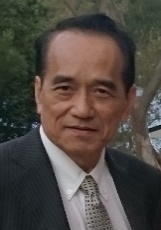
Emeritus Prof. Jack Ng
PhD, DABT, FACTRA, CChem, mISTEB, mISGSDQueensland Alliance for Environmental Health Sciences, The University of Queensland, Australia
Speech Title: Assessing Environmental and Human Health Impacts from Large-scale Industrial Activities for Sustainable Development
Abstract: Large-scale industrial activities have the potential to generate significant pollution causing harm to the surrounding ecosystem and human health. Here, we provided three examples for assessing potential risks from large-scale extractive and recycling industries. In project one, the study evaluated the extent of metal contaminations across two gold mine sites post-mining operation. Lead (Pb), arsenic (As), cadmium (Cd), and zinc (Zn) were found at levels exceeding the Health Investigation Levels (HIL), particularly in soil. Cattle production areas are often overlapping mined land in Australia. For environmentally sustainable development post-mining, key areas of the mine site were rehabilitated with pasture that would suit cattle grazing. Laboratory and field feeding trials using cattle were conducted to measure the bioavailability of targeted elements in soil and pasture. Biopsies of the muscle and liver were sampled at intervals to measure the elemental concentrations by ICP-MS and to compare with the national food standards. A predictive model and management framework were established for cattle grazing ensuring animal and human health protection. In the second project, we conducted mapping and characterisation of all potential exposure pathways of Pb in Mount Isa town adjacent to the Mount Isa Mine and Smelter. Synchrotron X-Ray spectroscopy and Pb isotopic ratios were utilised to identify chemical forms and sources of Pb. In-vitro bioaccessibility and in-vivo bioavailability data obtained were used to feed into the IEUBK model to predict blood Pb levels in children. The predicted blood Pb exceedances from significant exposure pathways agreed with the blood Pb survey in children. This is a useful tool for predicting potential risks to each household so that preventive and remedial actions can be implemented. In a third project, we assessed the risks of mixed metal/loid(s) to the local population living at and near the world's largest open beaching ship-wrecking yards in Bangladesh. Sixteen metal/loids in sediment, soil, groundwater, rice, vegetables, seafood, and human urine were measured. Higher urinary metal/loids, including As, Cd, and Mo, in the occupational and environmental exposure groups compared to the control site and international reference values, suggest a health threat. Quantile regression analysis suggests the impacted locations with shipwrecking activities are significant predictors of exposure and are probably due to the uncontrolled release of metal/loids during shipwrecking and recycling activities. In addition, the combined risk from all exposure pathways is also higher in shipwrecking areas. It is prudent that regular environmental monitoring and stricter regulatory control are needed to protect the environment and the public better. The above examples provide key steps and tools for a more refined risk assessment approach to better inform environmental and public health protection for sustainable development.
Keywords: Metals, mining, bioavailability, predictive tool, sustainable development
Biography: Professor Jack Ng has a PhD in Environmental Toxicology and Chemistry from The University of Queensland. He is an internationally recognised certified toxicologist (Diplomate of the American Board of Toxicology). His major research themes include mixture toxicity of both organic and inorganic pollutants; chemical speciation in environmental and biological media; bioavailability in relation to toxicities and risk assessment; carcinogenicity and mechanistic studies using various in vitro and in vivo models. He was the first in the world to establish a mouse model demonstrating inorganic arsenic at environmental levels in drinking water induced multiple tumours.
At the international level, Professor Ng’s expertise has been recognised by the World Health Organisation (WHO), the International Agency for Research on Cancer (IARC), and WHO/FAO Joint Expert Committee on Food Additives (JECFA) as demonstrated by his contribution to several monographs and technical reports produced by these agencies including the recent “Monograph 135 on PFOA and PFOS”. At the national level, Jack served as a member of the National Health and Medical Research Council Health Investigation Levels (HIL) Working Committee which oversaw the setting of the current National Environmental Protection Measures (NEPM) Health Investigation Levels (HILs).
